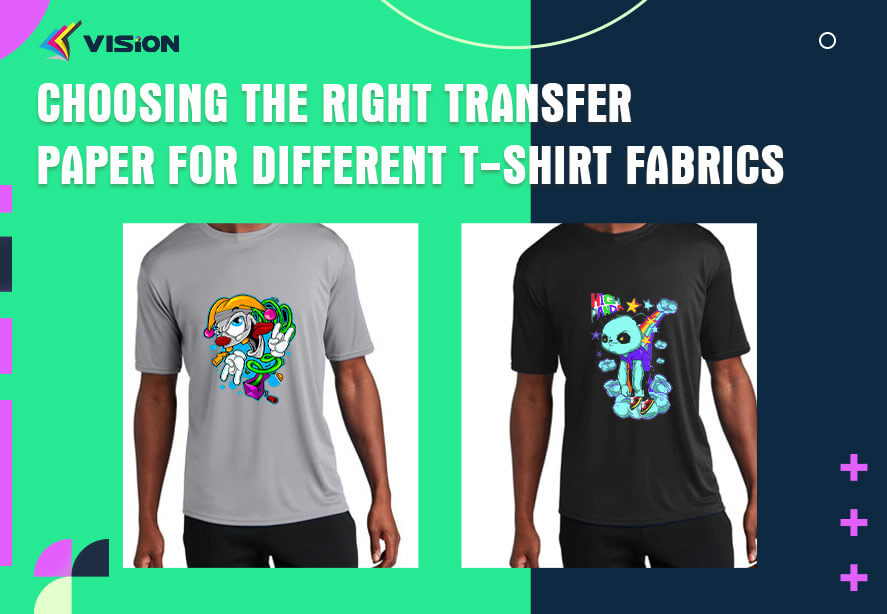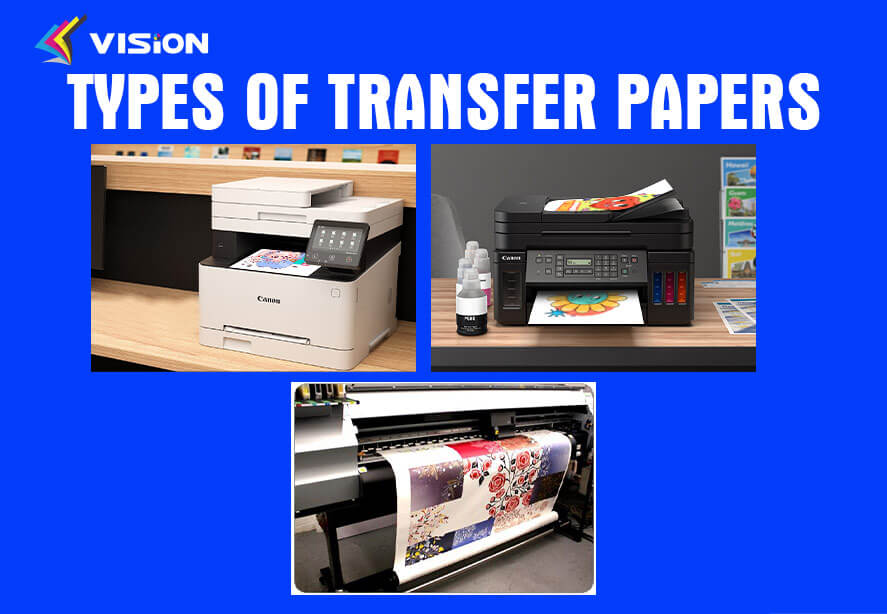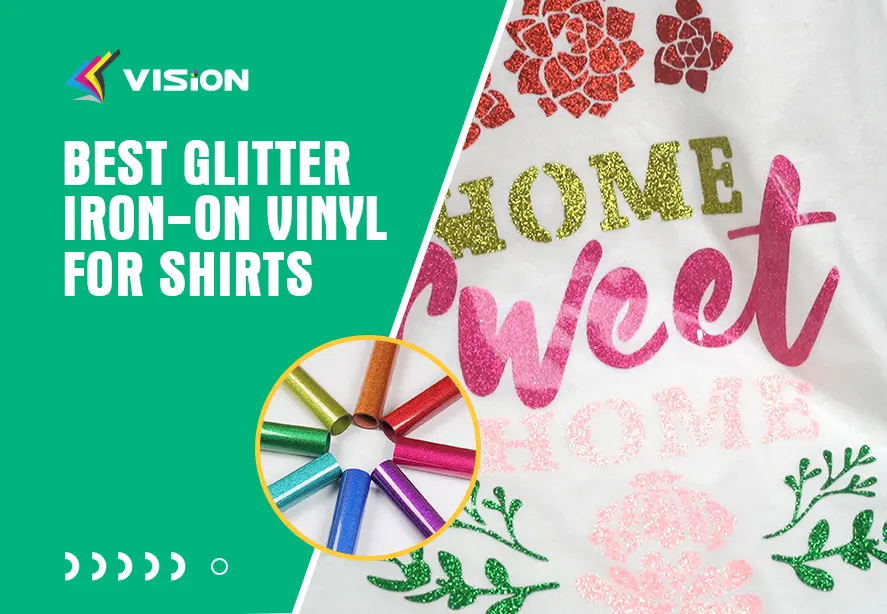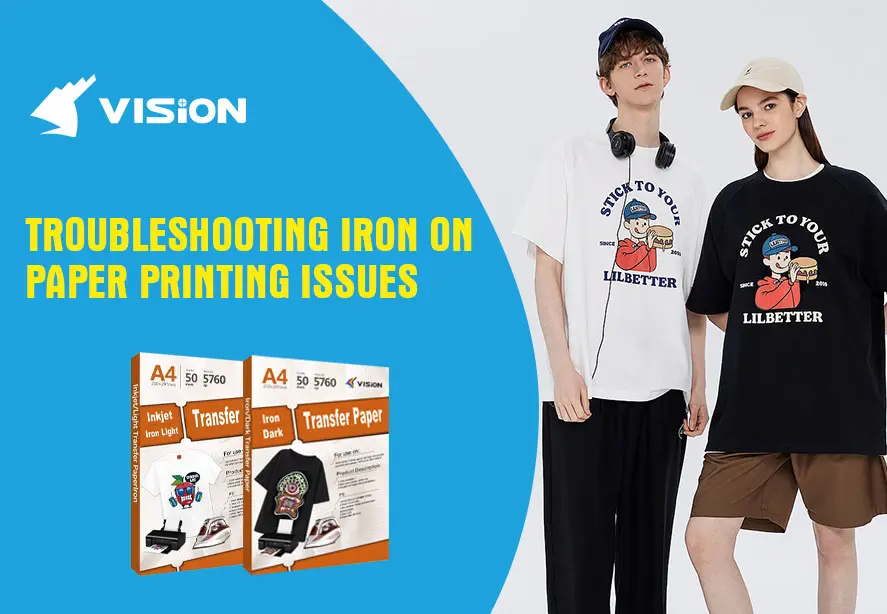Choosing the Right Transfer Paper for Different T-Shirt Fabrics

If you’ve ever dabbled in t-shirt printing, you know that the type of transfer paper you use can make or break your design. From cotton to polyester, each fabric has its quirks, and the transfer paper that works wonders on one type might be a total disaster on another. So, how do you navigate this maze of options?
Why the Right Transfer Paper Matters
Choosing the right transfer paper isn’t just about aesthetics—it’s also about durability, feel, and overall quality. The wrong paper can result in a design that fades quickly, cracks, or just doesn’t adhere well to the fabric. Plus, different fabrics have different reactions to heat and pressure, so matching the transfer paper to the fabric is crucial.
Understanding Different Types of T-Shirt Fabrics
1. Cotton
Cotton is the most common fabric for t-shirts and is generally easy to work with. It’s breathable, comfortable, and takes transfer designs well, but not all transfer papers are created equal when it comes to cotton.
2. Polyester
Polyester is popular for its durability and moisture-wicking properties, making it a favorite for athletic wear. However, it can be a bit trickier to print on due to its synthetic nature.
3. Blends
Blends combine the best of both worlds, offering the comfort of cotton and the durability of polyester. The challenge here is finding a transfer paper that adheres well to both fibers.
4. Specialty Fabrics
These include materials like spandex, rayon, and nylon, each with unique characteristics. They often require specialized transfer papers to ensure the print doesn’t crack or peel.
Types of Transfer Papers
1. Inkjet Transfer Paper
Perfect for home use, inkjet transfer paper is compatible with standard inkjet printers. It’s great for cotton and cotton-blend fabrics. However, it’s not as durable on synthetic materials.
2. Laser Transfer Paper
Laser transfer paper works with laser printers and is known for its high durability. It’s ideal for polyester and blends, but it can be more expensive and requires a laser printer.
3. Sublimation Paper
Sublimation paper is the go-to for polyester fabrics. The dye-sublimation process allows the ink to become part of the fabric, resulting in vibrant, long-lasting prints.

Types of Transfer Papers
Choosing the Right Transfer Paper for Cotton
When it comes to cotton, you have a bit more flexibility. Both inkjet and laser transfer papers work well, but each has its pros and cons.
Inkjet Transfer Paper: Affordable and easy to use, but not as durable.
Laser Transfer Paper: More durable but requires a laser printer.
Tips for Best Results:
Pre-Wash Your Shirts: This helps remove any sizing that might interfere with the transfer.
Use High-Quality Images: The better the image quality, the better the transfer will look.
Proper Heat and Pressure: Follow the manufacturer’s instructions for heat and pressure settings to avoid scorching the fabric or not transferring the image properly.
Tackling Polyester with Sublimation Paper
Polyester’s synthetic fibers make it less receptive to standard transfer papers, which is where sublimation paper shines.
Benefits of Sublimation Paper:
Vibrant Colors: The dye becomes part of the fabric, resulting in bright, long-lasting colors.
Durability: Sublimated designs are incredibly durable and won’t crack or peel over time.
Tips for Best Results:
Use White or Light-Colored Shirts: Sublimation doesn’t work well on dark fabrics.
Proper Heat and Pressure: Again, follow the manufacturer’s guidelines for the best outcome.
Finding the Perfect Match for Blends
Blended fabrics can be tricky because they combine natural and synthetic fibers. The key is to find a transfer paper that can adhere to both.
Recommendations:
Laser Transfer Paper: Often performs well on blends.
HTV: Another great option, offering flexibility and durability.
Tips for Best Results:
Test First: Always do a test transfer on a scrap piece of fabric to see how the paper adheres.
Adjust Heat and Pressure: Blends can be sensitive to heat, so you might need to adjust your settings.
Specialty Fabrics Need Special Attention
Fabrics like spandex, rayon, and nylon require specific types of transfer papers designed to adhere to their unique properties.
Recommendations:
Stretchable HTV: Works well with fabrics that need to maintain flexibility.
Specialty Transfer Papers: Look for papers specifically labeled for the type of fabric you’re working with.
Tips for Best Results:
Follow Instructions Closely: Specialty fabrics can be finicky, so precise heat and pressure settings are crucial.
Use Protective Sheets: A Teflon sheet or parchment paper can help protect your fabric and design during the transfer process.
Choosing the right transfer paper for different t-shirt fabrics can seem daunting, but with a little knowledge and the right tools, you can achieve professional-looking results every time. Remember to consider the type of fabric you’re working with and match it to the appropriate transfer paper. Whether it’s cotton, polyester, blends, or specialty fabrics, there’s a perfect transfer paper out there for you.
FAQ
For dark fabrics, consider using dark transfer paper, which is designed to provide a solid white background for your image, ensuring vibrant colors even on black or dark-colored shirts.
No, sublimation paper requires a sublimation printer with sublimation inks. Standard inkjet printers and inks won’t work for this process.
If your transfer starts peeling, try reheating it with a protective sheet on top to re-adhere the edges. If the issue persists, it might be due to improper heat settings or low-quality transfer paper.















